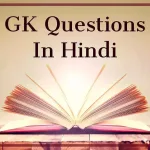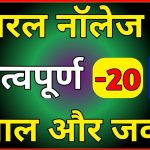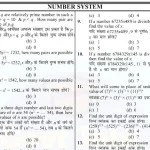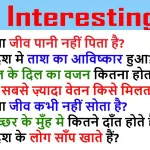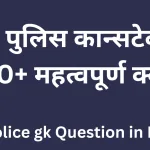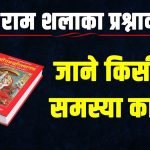विनय के पद: प्रश्न और उत्तर
प्रश्न: तुलसीदास जी किसके भजन के लिए कह रहे हैं?
उत्तर: तुलसीदास जी भगवान श्री राम के भजन के लिए कह रहे हैं।
प्रश्न: श्री राम ने परम गति किस-किस को प्रदान की?
उत्तर: श्री राम ने जटायु जैसे सामान्य गीध पक्षी और शबरी जैसी सामान्य स्त्री को परम गति प्रदान की।
प्रश्न: रावण को कैसे वैभव प्राप्त हुआ?
उत्तर: रावण ने भगवान शंकर को अपने दस सिर अर्पण करके वैभव की प्राप्ति की।
प्रश्न: राम ने कौन-सी संपत्ति विभीषण को दे दी?
उत्तर: रावण ने जो संपत्ति अपने दस सिर अर्पण करके प्राप्त की थी, उसे श्री राम ने अत्यंत संकोच के साथ विभीषण को दे दी।
प्रश्न: कवि के अनुसार हमें किसका त्याग करना चाहिए?
उत्तर: कवि के अनुसार जिन लोगों के प्रिय राम-जानकी जी नहीं हैं, उनका त्याग करना चाहिए।
प्रश्न: उदाहरण देकर लिखिए किन लोगों ने भगवान के प्यार में अपनों को त्यागा।
उत्तर: प्रह्लाद ने अपने पिता हिरण्यकशिपु को, विभीषण ने अपने भाई रावण को, बलि ने अपने गुरु शुक्राचार्य को और ब्रज की गोपियों ने अपने-अपने पतियों को भगवान प्राप्ति को बाधक समझकर त्याग दिया।
प्रश्न: जिस अंजन को लगाने से आँखें फूट जाएँ, क्या वह काम का होता है?
उत्तर: नहीं, जिस अंजन को लगाने से आँखें फूट जाएँ, वह किसी काम का नहीं होता है।
प्रश्न: उपर्युक्त पद द्वारा तुलसीदास क्या संदेश दे रहे हैं?
उत्तर: उपर्युक्त पद द्वारा तुलसीदास श्री राम की भक्ति का संदेश दे रहे हैं तथा भगवान प्राप्ति के लिए त्याग करने को भी प्रेरित कर रहे हैं।
प्रश्न: तुलसीदास जी के अनुसार, यदि मनुष्य सब प्रकार के सुख प्राप्त करना चाहता है, तो उसे क्या करना चाहिए?
उत्तर: तुलसीदास जी के अनुसार, यदि मनुष्य सब प्रकार के सुख प्राप्त करना चाहता है, तो उसे श्री राम का भजन करना चाहिए।
प्रश्न: ‘ऐसो कौ उदार जग माहीं’ — इस पंक्ति के माध्यम से कवि क्या कहना चाहते हैं?
उत्तर: इस पंक्ति के माध्यम से कवि कहना चाहते हैं कि इस संसार में श्री राम के समान उदार कोई नहीं है, जो बिना सेवा के भी दीनों पर दया करते हैं।
प्रश्न: ‘जो गति जोग बिराग जतन करि नहिं पावत मुनि ज्ञानी’ — इस पंक्ति का अर्थ क्या है?
उत्तर: इस पंक्ति का अर्थ है कि जो गति योग और वैराग्य के अनेक प्रयासों से भी मुनि और ज्ञानी नहीं प्राप्त कर पाते, वही गति श्री राम ने गीध (जटायु) और शबरी को प्रदान की।
प्रश्न: ‘सो संपदा विभीषण कहँ अति सकुच सहित हरि दीन्ही’ — इस पंक्ति का आशय स्पष्ट कीजिए।
उत्तर: इस पंक्ति का आशय है कि श्री राम ने रावण से प्राप्त संपत्ति को अत्यंत संकोच के साथ विभीषण को दे दी।
प्रश्न: ‘जाके प्रिय न राम वैदेही’ — इस पंक्ति में कवि क्या संदेश देना चाहते हैं?
उत्तर: इस पंक्ति में कवि संदेश देना चाहते हैं कि जिन लोगों को राम और सीता प्रिय नहीं हैं, उन्हें त्याग देना चाहिए, चाहे वे कितने ही प्रिय क्यों न हों।
प्रश्न: ‘अंजन कहां आंखि जेहि फूटै’ — इस पंक्ति का अर्थ क्या है?
उत्तर: इस पंक्ति का अर्थ है कि जिस अंजन को लगाने से आँखें फूट जाएँ, वह किसी काम का नहीं होता; उसी प्रकार जो व्यक्ति राम के चरणों में स्नेह नहीं रखता, उससे संबंध रखना व्यर्थ है।
प्रश्न: ‘बलिगुरु तज्यो’ — इस पंक्ति में किस घटना का उल्लेख है?
उत्तर: इस पंक्ति में उल्लेख है कि राजा बलि ने अपने गुरु शुक्राचार्य का त्याग कर दिया था, जब उन्होंने वामन रूपी भगवान विष्णु को तीन पग भूमि देने का संकल्प किया।
प्रश्न: ‘भरत महतारी’ — इस पंक्ति का संदर्भ क्या है?
उत्तर: इस पंक्ति में भरत द्वारा अपनी माता कैकेयी का त्याग करने का संदर्भ है, क्योंकि उन्होंने राम के वनवास में भूमिका निभाई थी।
प्रश्न: ‘कंत ब्रजबनितन्हि’ — इस पंक्ति का आशय स्पष्ट कीजिए।
उत्तर: इस पंक्ति का आशय है कि ब्रज की गोपियों ने अपने-अपने पतियों का त्याग कर दिया था, क्योंकि वे श्री कृष्ण के प्रति अत्यंत प्रेम रखती थीं।
प्रश्न: ‘तुलसी सो सब भांति परमहित’ — इस पंक्ति में कवि का क्या मत है?
उत्तर: इस पंक्ति में कवि का मत है कि जो व्यक्ति श्री राम के चरणों में स्नेह रखता है, वही सब प्रकार से परम हितकारी, पूज्य और प्राणों से भी प्यारा होता है।
प्रश्न: तुलसीदास जी के अनुसार, राम का भजन करने से क्या लाभ होता है?
उत्तर: तुलसीदास जी के अनुसार, राम का भजन करने से सभी प्रकार की इच्छाओं की पूर्ति होती है, क्योंकि श्री राम कृपा के सागर हैं।
प्रश्न: ‘जो गति जोग विराग जतन करि नहिं पावत मुनि ज्ञानी’ — इस पंक्ति में तुलसीदास जी किस बात पर बल दे रहे हैं?
उत्तर: इस पंक्ति में तुलसीदास जी इस बात पर बल दे रहे हैं कि भगवान की कृपा से वह गति प्राप्त होती है, जो योग और वैराग्य के प्रयासों से भी नहीं मिलती।
प्रश्न: ‘सो गति देत गीध सबरी कहँ प्रभु न बहुत जिय जानी’ — इस पंक्ति का अर्थ क्या है?
उत्तर: इस पंक्ति का अर्थ है कि भगवान श्री राम ने जटायु और शबरी को वह परम गति प्रदान की, जो बड़े-बड़े मुनियों को भी कठिन साधना से नहीं मिलती|
Recommended Indian Books for “Vinay Ke Pad” Question Answers with Authors and Publishers
1. NCERT Hindi Sparsh – Class 10
Author: NCERT Committee
Publisher: NCERT
Content Type: Includes textbook-level explanation of “Vinay Ke Pad”, word meanings, summary, and basic comprehension questions suitable for CBSE students.
2. All in One Hindi – Class 10
Author: Arihant Experts
Publisher: Arihant Publications
Content Type: Chapter-wise summary, poetic devices, grammar-based questions, short and long answers for exam prep.
3. Golden Guide Hindi Class 10
Author: N.K. Aggarwala
Publisher: New Age International
Content Type: Detailed question-answer sets, meanings of difficult words, extra questions for practice, and sample board-type questions.
4. Together With Hindi Class 10
Author: Rachna Sagar Editorial Team
Publisher: Rachna Sagar Pvt. Ltd.
Content Type: Includes textbook questions, extra HOTS questions, value-based questions, and writing practice material.
5. Evergreen Self Study in Hindi Class 10
Author: Dr. S.C. Gupta
Publisher: Evergreen Publications
Content Type: Summary, main points, central idea of the poem, textbook exercises, and model question papers.
6. Oswaal Hindi Question Bank Class 10
Author: Panel of Experts
Publisher: Oswaal Books
Content Type: Chapter-wise question banks with answers, topic summaries, previous year questions, and mind maps.
7. Saraswati Manika Hindi Sparsh Class 10
Author: Meera Gupta
Publisher: New Saraswati House
Content Type: Detailed interpretations, practice worksheets, answer framing guidance, grammar tips, and creative questions.
8. Exam Idea Hindi Class 10
Author: Panel of Educators
Publisher: Full Marks Pvt. Ltd.
Content Type: Focused on exam-specific questions, word-by-word explanations, solved examples, and sample answer sheets.
9. Xam Idea Hindi Class 10
Author: VK Global Publications
Publisher: VK Global
Content Type: Board-focused preparation material, NCERT-based solutions, model answers, and frequently asked questions.
10. Pradeep Guide for Hindi Class 10
Author: P.S. Dhillon
Publisher: Pradeep Publications
Content Type: Brief summaries, main themes, vocabulary lists, figurative language analysis, and question-answer banks.
11. Vidya Hindi Study Guide Class 10
Author: Renu Sharma
Publisher: Vidya Prakashan
Content Type: Objective and subjective questions, in-depth analysis of each poem, self-assessment quizzes.
12. Educart Hindi Question Bank Class 10
Author: Educart Team
Publisher: Educart
Content Type: New exam pattern-based questions, assertion-reason, extract-based questions, and model answer keys.
13. MBD Scorewell Hindi Class 10
Author: MBD Editorial Board
Publisher: MBD Group
Content Type: Explains poetic expressions, author’s intent, and includes variety of practice questions with structured answers.
14. Target High Scores Hindi Guide
Author: Sushma Chawla
Publisher: Dhanpat Rai Publications
Content Type: Summary explanations, skill-based questions, poetic devices, and writing practice related to the poem.
15. Hindi Sahitya Bhawan – Sparsh Class 10
Author: K.P. Thakur
Publisher: Sahitya Bhawan Publications
Content Type: Line-by-line translation, meanings, theme discussion, and exam-oriented questions with suggestions.
16. Learnwell Hindi Class 10
Author: Neelam Sood
Publisher: Goyal Brothers Prakashan
Content Type: Poem summary, explanation in simple language, HOTS questions, and poetry appreciation.
17. Rapid Revision Hindi Class 10
Author: Ramesh Kumar
Publisher: Cordova Publications
Content Type: Revision notes, short and long answers, important poetic lines, and quick learning material.
18. Scholar’s Hub Hindi Class 10
Author: Rashmi Sharma
Publisher: Scholar’s Hub
Content Type: Thematic analysis, understanding poet’s message, and chapter-wise evaluation questions.
19. Brain Mapping Academy Hindi Guide
Author: Sanjay Gupta
Publisher: Brain Mapping Academy
Content Type: Focused content on conceptual clarity, memory tricks, and sample questions for each poetic theme.
20. Simple Path Hindi Class 10 Guide
Author: Priya Mehta
Publisher: Sunrise Publications
Content Type: Easy-to-understand explanations, flowcharts for poetry, MCQs, and writing skill practice based on the poem.
Vinay Ke Pad Question Answers – Expert Guide for Hindi Learners
“Vinay Ke Pad” is one of the most insightful and spiritually rich poems in the Class 10 Hindi curriculum. Composed by the legendary poet Tulsidas, this poem reflects humility, devotion, and a deep moral compass. For students aiming to score high in Hindi literature, understanding the meaning and context behind each stanza is essential. That’s where structured Vinay Ke Pad question answers come into play.
Students often struggle with poetic language, especially in devotional literature. “Vinay Ke Pad” uses traditional Hindi vocabulary and a style that requires more than just translation—it needs explanation. The key to mastering this chapter lies in comprehending the poet’s intent, tone, and message, which is rooted in bhakti (devotion).
A good starting point is to break the poem into segments. Go through each line, noting difficult words and expressions. With every stanza, think about what the poet is trying to say about human behavior, humility, and the divine. This will make answering both short and long questions much easier during exams.
Teachers and examiners often frame Vinay Ke Pad questions around literary devices, meanings, and interpretations. So, while preparing, make sure to focus on important keywords such as “vinay” (humility), “bhakti” (devotion), and “udarta” (generosity). Answers should be crisp, analytical, and backed with references from the text.
For effective preparation, it’s recommended to practice three types of questions:
-
Word-meaning based short answers
-
Extract-based interpretation questions
-
Long-form answers discussing themes or character references
One expert recommendation is to write answers in your own words rather than memorizing them. This not only helps in better retention but also improves language skills. While practicing, try framing your own questions from each verse. This active engagement with the text deepens understanding and boosts confidence.
Using Vinay Ke Pad question answers as a revision tool also helps identify common themes and exam trends. For instance, previous years have seen frequent questions about the poet’s views on selflessness, the value of humility, and the contrast between spiritual and material life. These are high-value topics that are likely to appear in tests.
Another tip is to pay close attention to poetic elements such as “alankar” (figures of speech), “bhav” (emotion), and “sandesh” (message). Many students ignore these, but questions on poetic techniques are common and can help boost scores if answered well.
Many study guides also suggest discussing the relevance of Tulsidas’ thoughts in today’s context. Bringing a modern perspective to your answers shows deeper understanding and analytical ability—something that examiners always appreciate.
Lastly, consistency is key. Make it a habit to revise questions and answers regularly. Instead of doing it all at once, divide it over days to ensure the content stays fresh in your memory. Summarizing each stanza in one or two lines before answering helps create a clear thought structure, which reflects in your responses.
Whether you’re preparing for your board exams or trying to appreciate Hindi literature better, focusing on well-framed Vinay Ke Pad question answers will definitely enhance your learning journey and confidence.
FAQ for Vinay Ke Pad Question Answers
What is the main theme of Vinay Ke Pad?
The main theme of Vinay Ke Pad is humility and complete surrender to God. The poet emphasizes the power of devotion over knowledge, status, or rituals.
Who wrote Vinay Ke Pad and why is it important?
Vinay Ke Pad was written by Goswami Tulsidas. It is important because it teaches moral values, promotes devotion, and reflects the core principles of Bhakti movement literature.
What types of questions are usually asked from Vinay Ke Pad in exams?
Exams usually include word-meanings, extract-based questions, literary device identification, theme-based long answers, and explanation of poetic lines.
How should I prepare for Vinay Ke Pad question answers?
Start by understanding each verse line-by-line, make notes of difficult words, practice sample questions, and focus on the poet’s intent. Use short summaries and expert-curated guides for clarity.
What kind of poetic devices are used in Vinay Ke Pad?
The poem includes anaphora, alliteration, metaphor, and imagery. Recognizing these can help you answer literary analysis questions effectively.
Are questions based on moral lessons included in exams?
Yes, questions often ask about the moral values or life lessons conveyed through the poem, especially how devotion is greater than status or intellect.
Can I score full marks in Vinay Ke Pad questions?
Absolutely. With clear understanding, structured answers, and regular practice, students can score full marks in this section.
What is the tone of Vinay Ke Pad?
The tone is humble, devotional, and reflective. Tulsidas speaks from the heart, expressing deep reverence and the insignificance of ego before God.
Is it important to memorize the poem?
While full memorization isn’t required, remembering key lines and their meanings can help support your answers and make them stronger.
What is the best way to answer long questions from Vinay Ke Pad?
Start with a brief introduction, explain the theme or meaning, refer to specific lines, and end with the poet’s intended message. Keep the language clear and respectful of the poem’s devotional tone.
Latest Posts
- Step-by-step guide to download and apply for jee mains admit card 202
- Comprehensive 2025 government holidays and recruitment details for job seekers
- JEE Mains Admit Card 2025: Your Step-by-Step Guide to Downloading the Hall Ticket
- Everything You Need to Know About 2025 Government Holidays Recruitment
- Comprehensive Guide to rrb d group recruitment 2025 – Eligibility, Vacancies, and Application
- Detailed guide to nps trust recruitment 2025 vacancies, eligibility and apply process
- Comprehensive guide to hpcl recruitment 2025 notification, vacancies, and application process
- ignou bed admission 2025 complete recruitment guide with eligibility and process
- Comprehensive Guide to Indian Army Agniveer Recruitment 2025 Notification and Jobs
- Everything You Must Know About CBSE Board Exams 2025 Changes & New Rules

